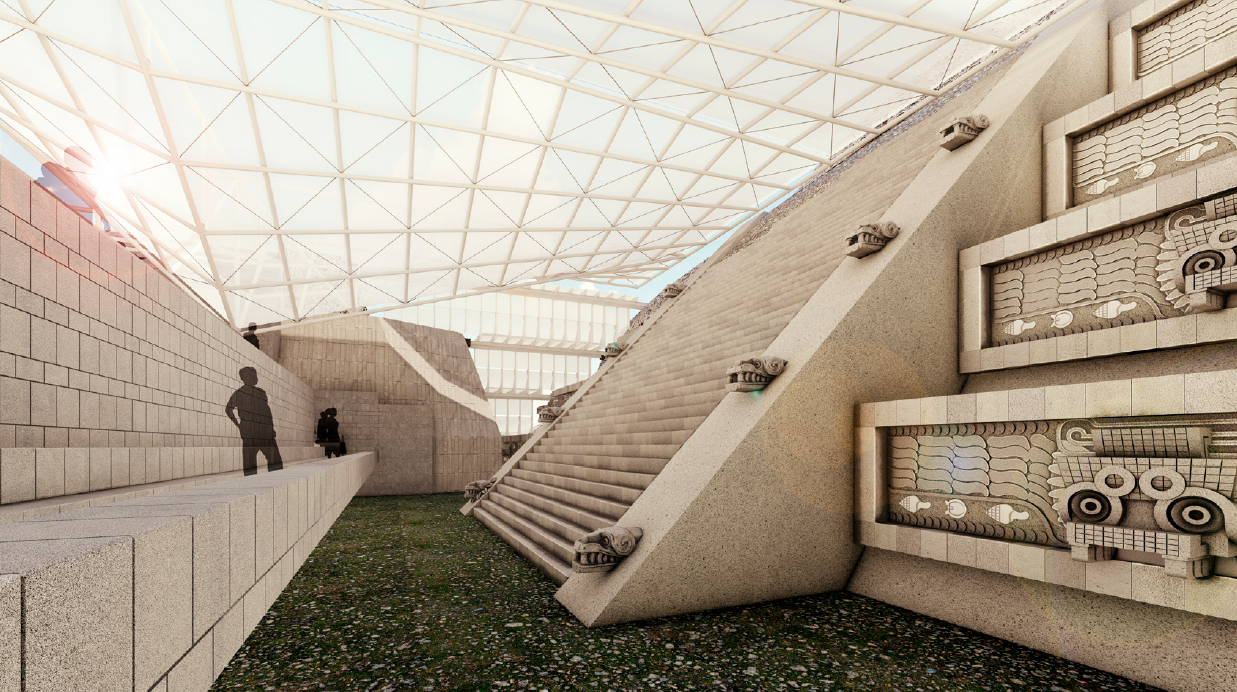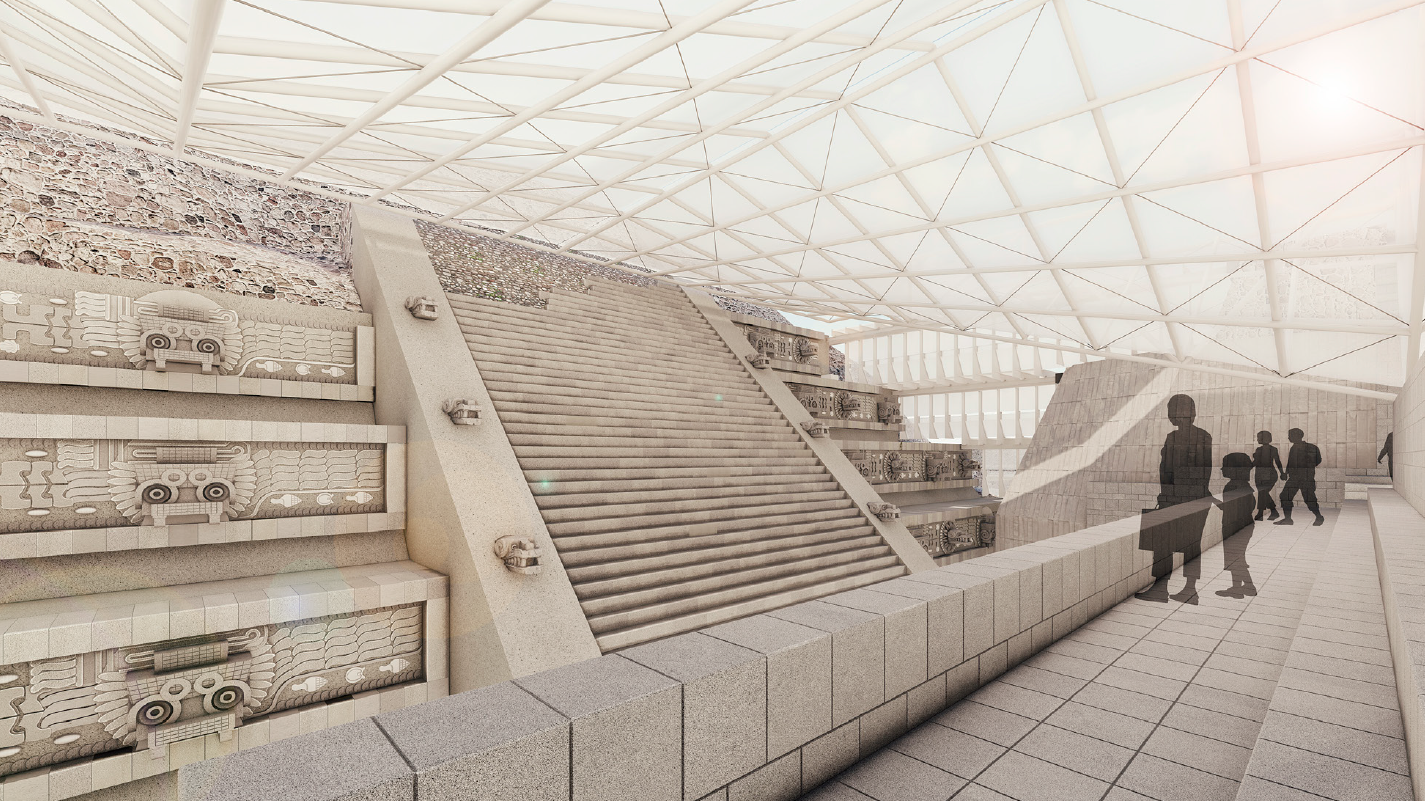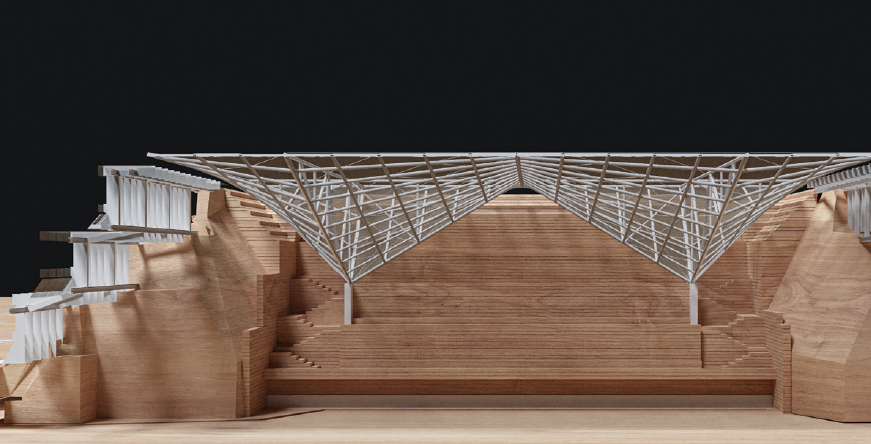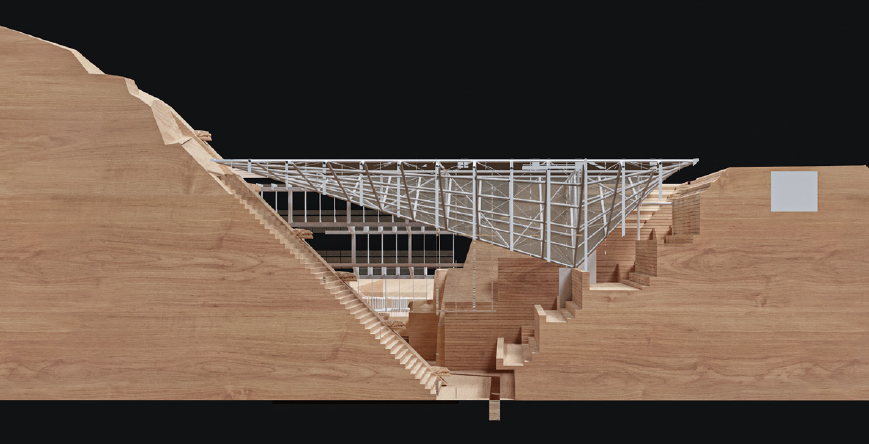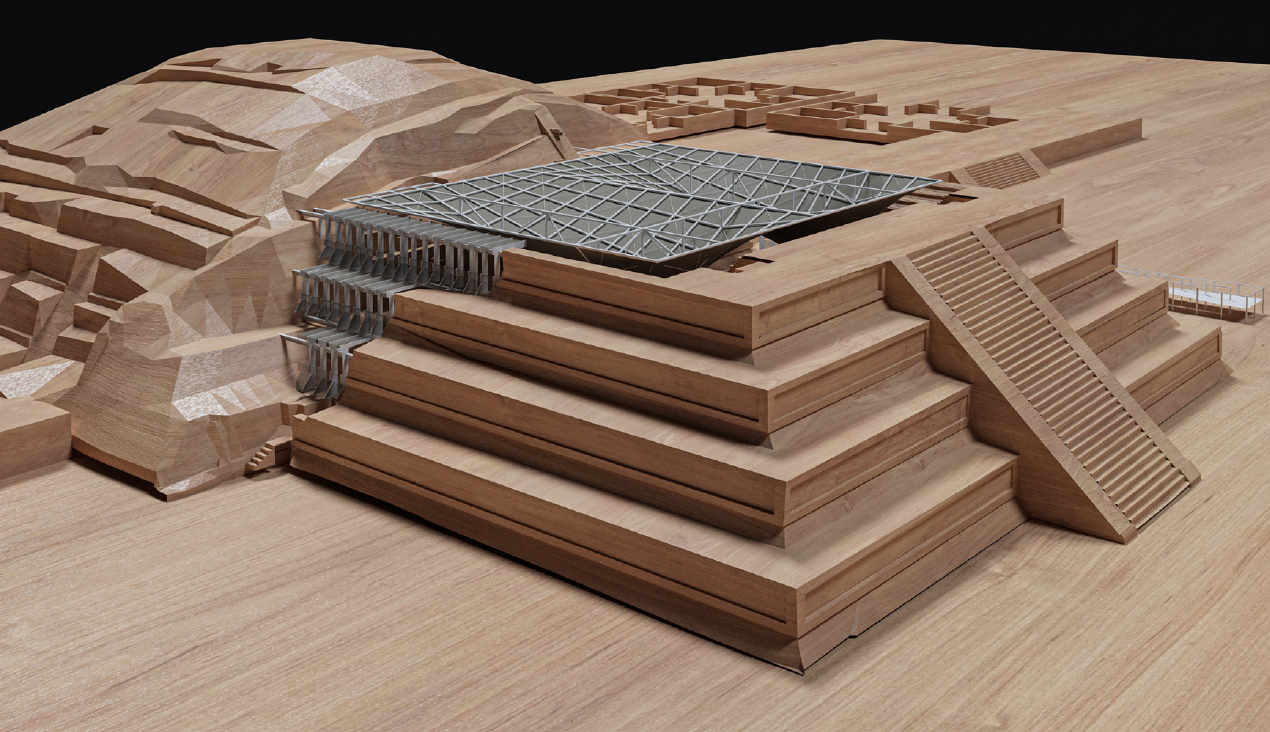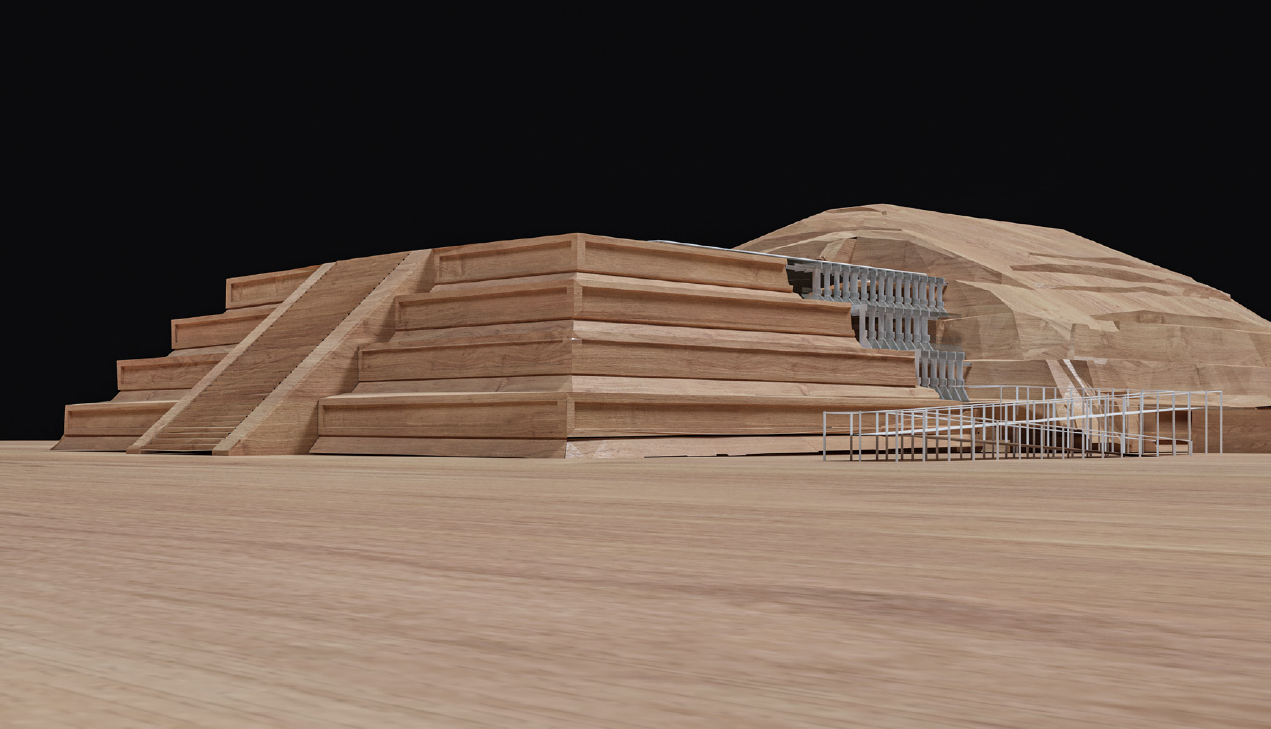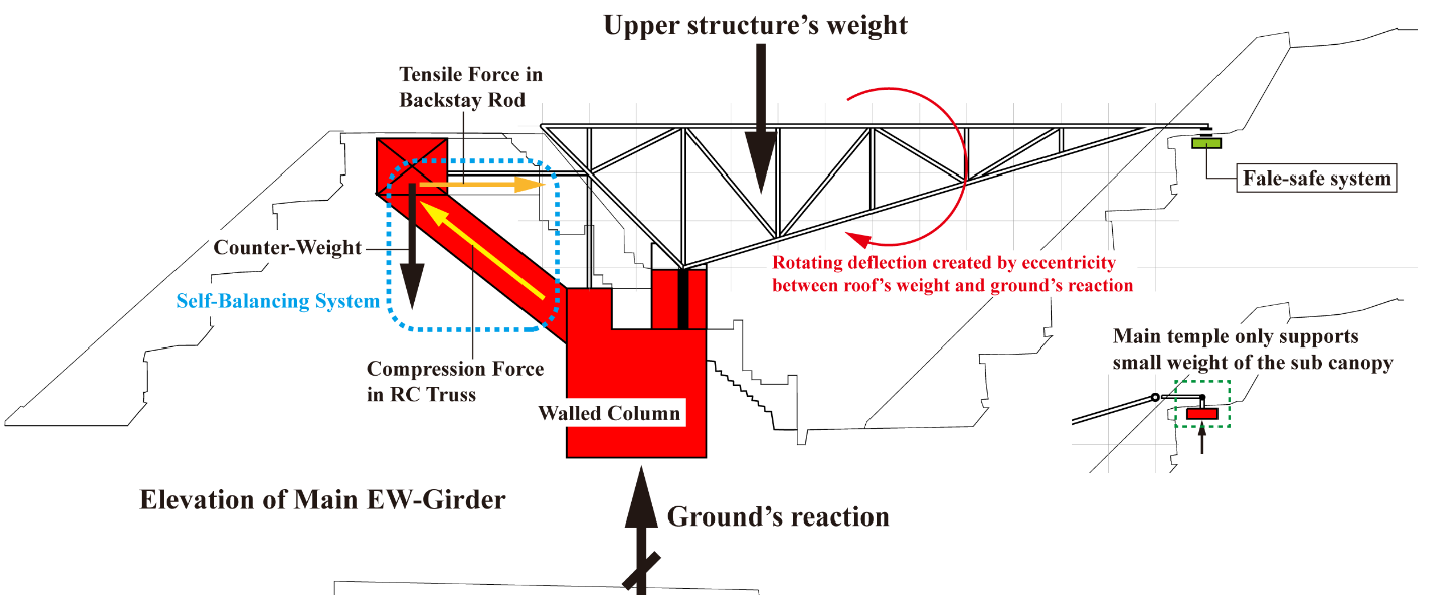滋賀県立大学 永井拓生+サステナブル構造デザイン研究室
THE UNIVERSITY OF SHIGA PREFECTURE
滋賀県立大学 永井拓生+サステナブル構造デザイン研究室
THE UNIVERSITY OF SHIGA PREFECTURE
滋賀県立大学 永井拓生+サステナブル構造デザイン研究室
THE UNIVERSITY OF SHIGA PREFECTURE

Located at the southern edge of the Teotihuacan ruins in Mexico, the Temple of Quetzalcoatl is a ceremonial structure dedicated to Quetzalcoatl, the feathered serpent (Serpiente Emplumada) of Aztec mythology. It is believed to have been constructed around 150–200 CE. This project, developed in collaboration with a group of Mexican architects, was awarded second prize in an international design competition for a protective canopy system aimed at preserving the valuable ruins of the Teotihuacan civilization, including the sculpted representations of Quetzalcoatl.
Due to strict preservation restrictions, there were only a few designated areas where excavation or structural foundations were permitted. Even in these areas, the design had to ensure that the newly added weight would not exceed that of the original ruins. Therefore, the proposed system incorporates counterweighted foundations and a large cantilevered roof in the form of a hyperbolic paraboloid (HP) shell. The overturning moment of the cantilevered roof is counteracted by a reinforced concrete structural frame installed in another designated excavatable area, creating a self-balancing system that ensures no additional load beyond the original structural weight is imposed on the ruins.
The roof structure is designed to remain largely embedded within the pyramid and inconspicuous from the outside. Rainwater collected on the canopy is channeled internally and discharged outside the pyramid via two column–foundation assemblies.
The choice of an HP shell canopy not only serves functional purposes—such as structural efficiency and water drainage—but also reflects a deep respect for the legacy of Mexican architects like Félix Candela and Eduardo Torroja, whose work with thin-shell concrete structures continues to inspire architectural innovation.
Structural Design: Takuo Nagai Lab + Waikong Lam + Masahiko Matsuhashi
Collaborator: Taiyokogyo Co.
Program: Protective Covering Roof
Year of Planning: 2021-2022 (Unbuilt)
Image courtesy of Taro Zorrilla
メキシコのテオティワカン遺跡の南端に位置するケツァルコアトル神殿は,アステカ神話に登場する羽毛のある蛇(Serpiente Emplumada)の姿をしたケツァルコアトルを祭る神殿であり,西暦150-200年頃の建設と考えられている。本プロジェクトは,ケツァルコアトルの彫像を始めとしたテオティワカン文明の貴重な遺構を保護するための架構システムを募る国際コンペの第2等当選案で,メキシコの建築家グループとともに取り組んだプロジェクトである。
遺跡は発掘や構造物を設置することが可能な箇所が極めて限られており,そうした個所にもともとの遺跡の重量を上回ることのないようにカウンターウェイトとなる基礎を設置し,巨大なHPシェル形状の片持ち屋根をかける架構とした。片持ち屋根の転倒モーメントは,同様に掘削が可能な箇所に設けたRCの架構により処理して自己釣合い系を形成し,遺跡にもともとの重量を超える一切の荷重を負担させない計画としている。
神殿の外からは屋根はピラミッドの内部にほとんど埋まっており目立たない意匠としており,屋根の雨水は一旦内部に集めてから2か所の柱・基礎を伝ってピラミッド外に排出する計画となっている。
また,キャノピーのHPシェル状の全体形状を選択した理由は,構造や雨水処理等の機能的な側面だけでなく,メキシコの建築家達のフェリックス・キャンデラやエドゥアルド・トロハに対する強いリスペクトが込められている。
構造設計:永井拓生研究室+ラム・ワイコン+松橋雅彦
協力:太陽工業
計画年:2021-2022年(未完)
